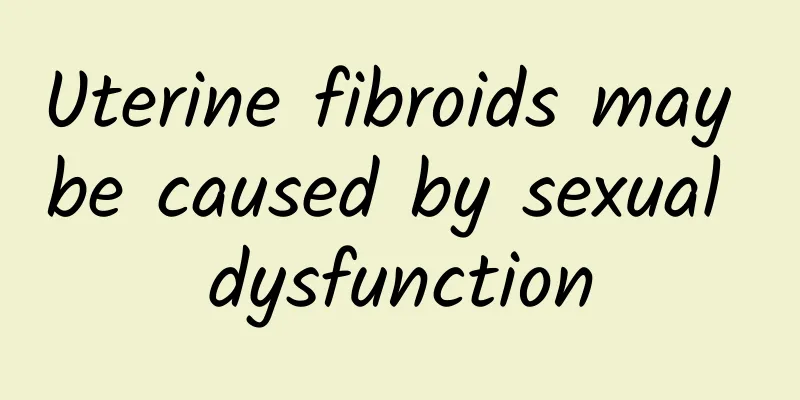What are the dietary precautions for functional uterine bleeding?

|
What are the dietary points for functional uterine bleeding? A scientific and reasonable diet is not only conducive to our own health, but also can play an auxiliary role in the treatment of diseases to a certain extent. Functional uterine bleeding is a common gynecological disease, referred to as blood supply. So, what are the dietary points for functional uterine bleeding? In traditional Chinese medicine, functional uterine bleeding belongs to the category of metrorrhagia. The so-called metrorrhagia refers to the sudden discharge of blood, while the bleeding refers to the continuous bleeding of a small amount. Metrorrhagia and bleeding can transform into each other. After metrorrhagia, the deficiency of qi and blood can turn into bleeding. If the bleeding continues for a long time, the disease may suddenly develop metrorrhagia. However, metrorrhagia refers to all vaginal bleeding diseases, so when combining traditional Chinese and Western medicine for treatment, it is necessary to check and exclude organic lesions before treating according to the principles of metrorrhagia to avoid confusion and delay treatment. 1. Eat more fresh vegetables and fruits. Many vegetables and fruits are rich in trace elements, which are very beneficial for replenishing energy and enhancing hematopoietic function after excessive blood loss. Such as spinach, rapeseed, cabbage, tomatoes, carrots, apples, pears, bananas, oranges, hawthorns, fresh dates, etc. These foods are not only rich in iron and copper, but also contain folic acid, vitamin C and carotene, which have a good effect on the treatment of anemia. 2. Supplement adequate protein. When functional bleeding occurs, excessive bleeding may cause anemia. Therefore, you should pay attention to protein supplementation. You can eat more animal protein, such as milk, eggs, lean meat, pork liver, etc., because these foods are rich in essential amino acids needed by the human body, and also contain vitamins A, B1, B2, B12, etc., which are important foods for the treatment of anemia. 3. Avoid fatty, sticky and indigestible foods such as fatty meat and glutinous rice. People with excess heat should avoid greasy, warming and tonic foods, as well as spicy, irritating substances and condiments such as chili peppers, wine, pepper, garlic, onions, ginger, etc. to avoid increasing menstrual blood volume. People with deficiency cold should avoid raw and cold fruits and vegetables, frozen drinks, etc. For adolescent patients with functional uterine bleeding, they need to increase nutrition to meet the needs of physical development, and should supplement protein, trace elements iron, copper, zinc, vitamin A, vitamin B, vitamin C, vitamin E, etc. These nutrients are not only needed for physical development, but also for the development of ovaries and gonads. |
<<: How long can you live with severe cervical erosion?
>>: How to prevent women from gaining weight after abortion
Recommend
Full launch! Zhang County conducts large-scale inspection of livestock and poultry meat products
In line with the central government's policy,...
Metabolic syndrome is not just about waist circumference! Nutritionist: Stay away from the three major dietary landmines
Metabolic syndrome is a popular disease of civili...
How to treat senile vaginitis
How to treat senile vaginitis? Treating senile va...
What should women do if they have uterine fibroids? Preventive measures for uterine fibroids
I believe many people have consulted about uterin...
How long after abortion does it take to have a menstrual period?
How long after a miscarriage does it take to have...
Do you know any early symptoms of uterine fibroids?
Do you know what early symptoms of uterine fibroi...
Does bacterial vaginosis affect pregnancy?
Bacterial vaginitis is a relatively common diseas...
5-color crystal rice dumplings add phytochemicals, kidney patients eat less burden
On the eve of the Dragon Boat Festival, every hou...
Nursing care of patients with Bartholinitis during delivery
How to care for pregnant women with Bartholinitis...
How harmful is ectopic pregnancy to women?
How harmful is ectopic pregnancy to women? Whethe...
Causes of uterine fibroids
Among gynecological diseases, uterine fibroids ar...
To maintain ovarian function, women need to do 6 things every day
Women's ovaries need special attention and ma...
The calories from eating 4 glutinous rice balls during the winter solstice equals 1 bowl of rice! Nutritionist: Master these three tips to avoid eating fat and reduce the burden on your stomach and intestines
This Friday, December 22nd, is the Winter Solstic...
How can women prevent the infection of cervical warts?
Cervical warts are a very common disease nowadays...
Keep your nerves tight! Taipei City conducts large-scale inspections of 22 businesses
The Taipei City Government Health Bureau speciall...









